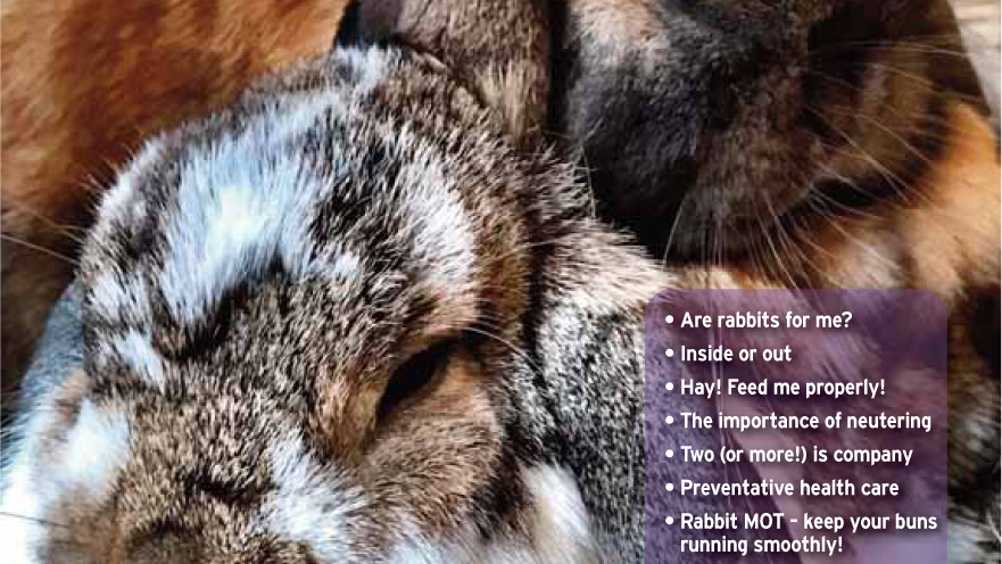References
Healthy rabbits and communicating with owners

Abstract
Rabbits need species-specific care, in order to meet their health, welfare and behavioural needs. Preventative health care is imperative to help keep rabbits healthy. Advice needs to be given to owners on their rabbit's dietary requirements, and why hay and grass is imperative as the bulk of their diet. Vaccinations to help prevent myxomatosis and rabbit viral haemorrhagic disease (RVHD1 and RVHD2) should be advised for all rabbits, including house rabbits. Rabbits require adequate space and the companionship of another rabbit to live a good quality life. They should have access to an exercise area, and have the choice of where to spend their time, without the need to be picked up and moved from a hutch to a run.
Many owners will look to veterinary nurses for current advice, and it is important that nurses feel confident in offering the most up-to-date information. At times, it may be that owners need to make changes to the way they care for their rabbits, and being confident in explaining why these need to be implemented, and the positive effects these will have on the rabbit's life, is vital.
With an estimated 1 million pet rabbits in the UK (O'Neill DG et al, 2019), rabbits make up a considerable and growing proportion of the caseload in small animal practice (Meredith and Lord, 2014), for both preventative health care and when veterinary treatment may be required for a disease process.
The different breeds of rabbits show variations, including in size, temperament and acceptance of human company, and ensuring pet rabbits are healthy involves direct owner communication and education on a range of health and welfare topics. Much information is available through online facilities, which may or may not be accurate.
Making sure owners can access the most up-to-date information is important and in practice this may be the responsibility of the veterinary nurse. Advice should be offered on current vaccination protocols, neutering, diet, housing, companionship and bonding, as well as day to day care. Owners should be aware of how to recognise if their rabbits are happy, and that their welfare needs are being met.
Register now to continue reading
Thank you for visiting The Veterinary Nurse and reading some of our peer-reviewed content for veterinary professionals. To continue reading this article, please register today.

